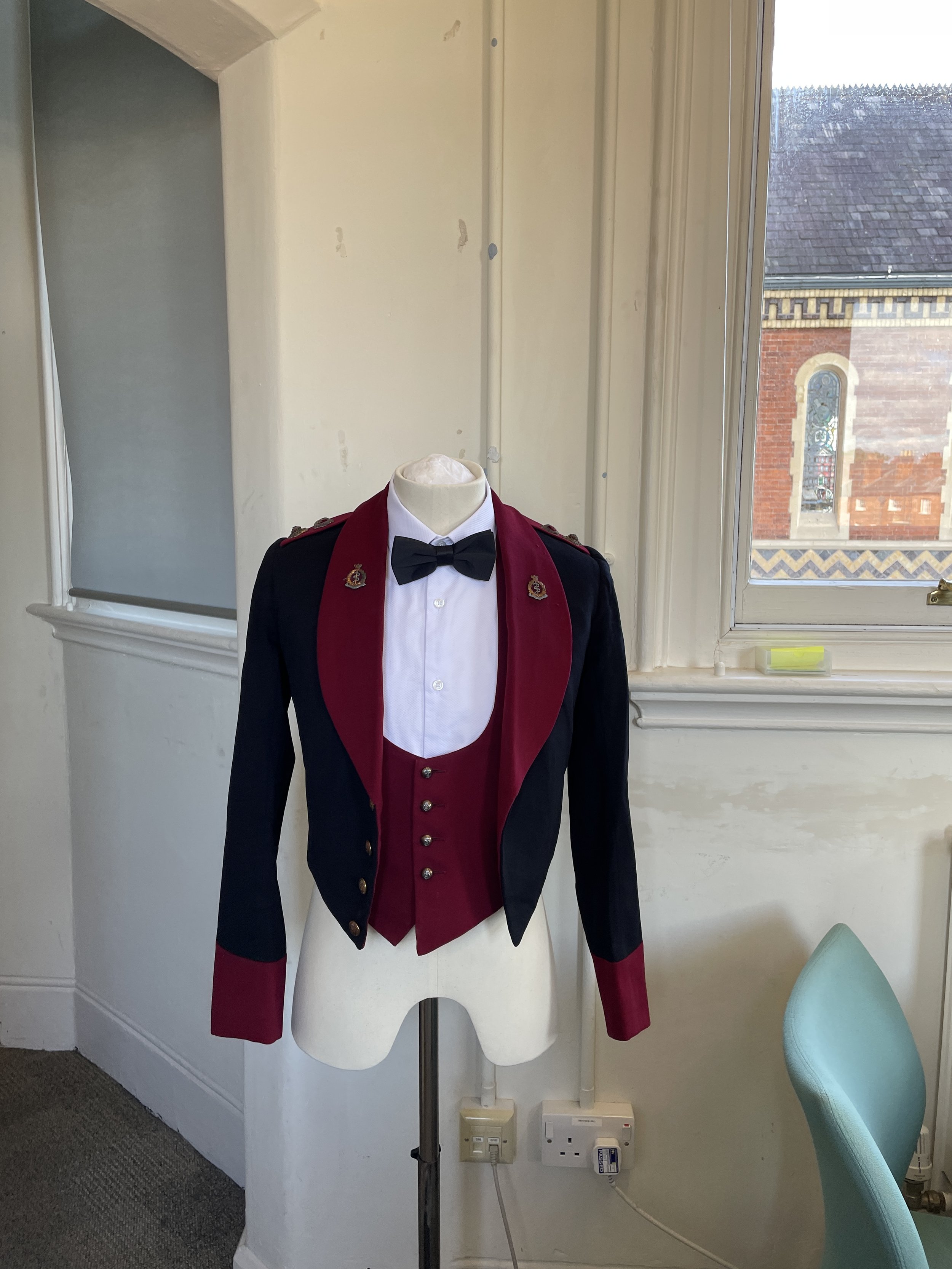In my previous blog post, I took you through the entire process of creating the “ART & ANATOMY” display at George Marshall Medical Museum. Now, it is time for the newly refreshed exhibit at The Infirmary Museum.
This particular display is dedicated to Lt. Col. G. H. Goddard, a distinguished medical officer, who served in the Royal Army Medical Corps during the Second South African War and the First World War. Later, he moved to Worcester where he continued his career after military service, then took on the role of the head of St.John Ambulance in the region. Generously, his family contributed a substantial collection of his personal items to the museum. WIth these items, we are able to uncover the stories of medicine during wartime. The display primarily drew upon objects from Goddard’s collection, offering a glance into his life and accomplishments, all of which reflect the practice of medicine during his time.
This display differed from the temporary exhibit at George Marshall Medical Museum which I introduced in my previous post. Here, we have a specific theme, stories to tell, and the collections to be chosen from. This led to a common question during the planning - which objects to include and how should they be displayed?
The process kicked off with research, an essential step for a person relatively new to medical history like me. I immersed myself in military history, particularly the South African War and the First World War, as well as went into the local history during wartime, the practice of medicine during that period, and the history of St.John Ambulance.
Doing my research in Worcester’s iconic library – The Hive.
As I was more familiar with those areas, my attention turned to space. The exhibit occupies likely the largest display case in the museum. However, the previous display underutilised this space, leaving half area unused. Recognising this opportunity, plus given the recent accession of new objects from Goddard’s family, I aimed to maximise the use of space. To achieve this, I carefully measured the space and looked for solutions to incorporate more objects. I found a self-standing glass shelving unit that would go perfectly with the display.
While waiting for the new shelf, I conduct a thorough examination of objects within Goddard’s collection, both digitally in the system and physically. This step aimed to identify objects, and search for stories and narratives to feature in the display.
Collection of Goddard’s artefacts spread out in the Boardroom of former Worcester Royal Infirmary for exploration.
Beautifully fitted mess dress on the mannequin.
One highlight in the exhibit is Goddard’s costume, which required regular replacement due to the sensitivity of textiles to light. Fortunately, a splendid mess dress in the collection paired perfectly with a set of miniature medals that had recently been acquired. The only concern was whether the dress would fit on the mannequin tailored for a different costume. To address this, the dress was placed before any other objects, ensuring a perfect fit. As you can see in the final display, they fit beautifully, accompanied by a newly purchased shirt and bowtie. Unfortunately, due to limitations of the form, we could not display the trousers, or we could have showcased a complete mess dress uniform.
When the new shelving unit arrived, it was time to clear the space and start the setup process. Objects previously on display were carefully removed and returned to their designated locations, making room for the transformation. However, a considerable challenge was awaited, the new shelving unit must be built inside of the display case. Imagine the complexity of assembling IKEA furniture, then adding the challenge of constructing a glass shelf within a narrow glass cabinet. Thankfully, the assembly instruction was straightforward, and the interior space was more accommodating than it appeared from the outside. Thus, I successfully completed the installation without any unfortunate incident.
Building a glass shelving unit inside a glass display cabinet – challenge accepted.
With the new shelf in place, the focus shifted to object selection. This process involved grouping objects from Goddard’s collection to create narratives that spanned multiple items. I carefully handled each object to explore the details they held, conducting further research to understand not only their purpose but also the context surrounding them. I also searched the museum’s collection for additional items that could enhance the narrative. After repeating this process, I compiled a list of object lineups, along with a visual design and layout for the display. In the meantime, text and labels were also carried out, finalised and sent for printing.
Me and a pile of objects in the museum office, conducting research for a better understanding of the objects.
Once everything was ready, it was time for the next exciting step, installation. Selected objects were carefully placed on the shelf and their positions within the display case, with close attention ensuring that each item was positioned to avoid any damages and clearly visible to visitors. After several rounds of adjustment and ensuring everything was perfectly in place, the cabinet was sealed and locked. The newly refreshed display was officially complete and ready to be seen by the public.
Getting everything in place ready for the launch!
As a museum-goer who appreciates the chance to see more objects on display, I understand the significance of expanding exhibitions. It means more items can be viewed by a wider audience, and more stories can be shared. The freshly transformed display dedicated to Lt. Col. Goddard features twice as many objects as the previous one, all carefully curated with a considerable amount of time and effort by a curator-in-training who had the privilege of an eight-week placement in Worcester and truly enjoyed every moment of it.
Don’t miss the chance to visit The Infirmary Museum and explore lives and works of the people of Worcester who devoted themselves to health and wellness.
Nahm (Kanruthai) Chongraks





